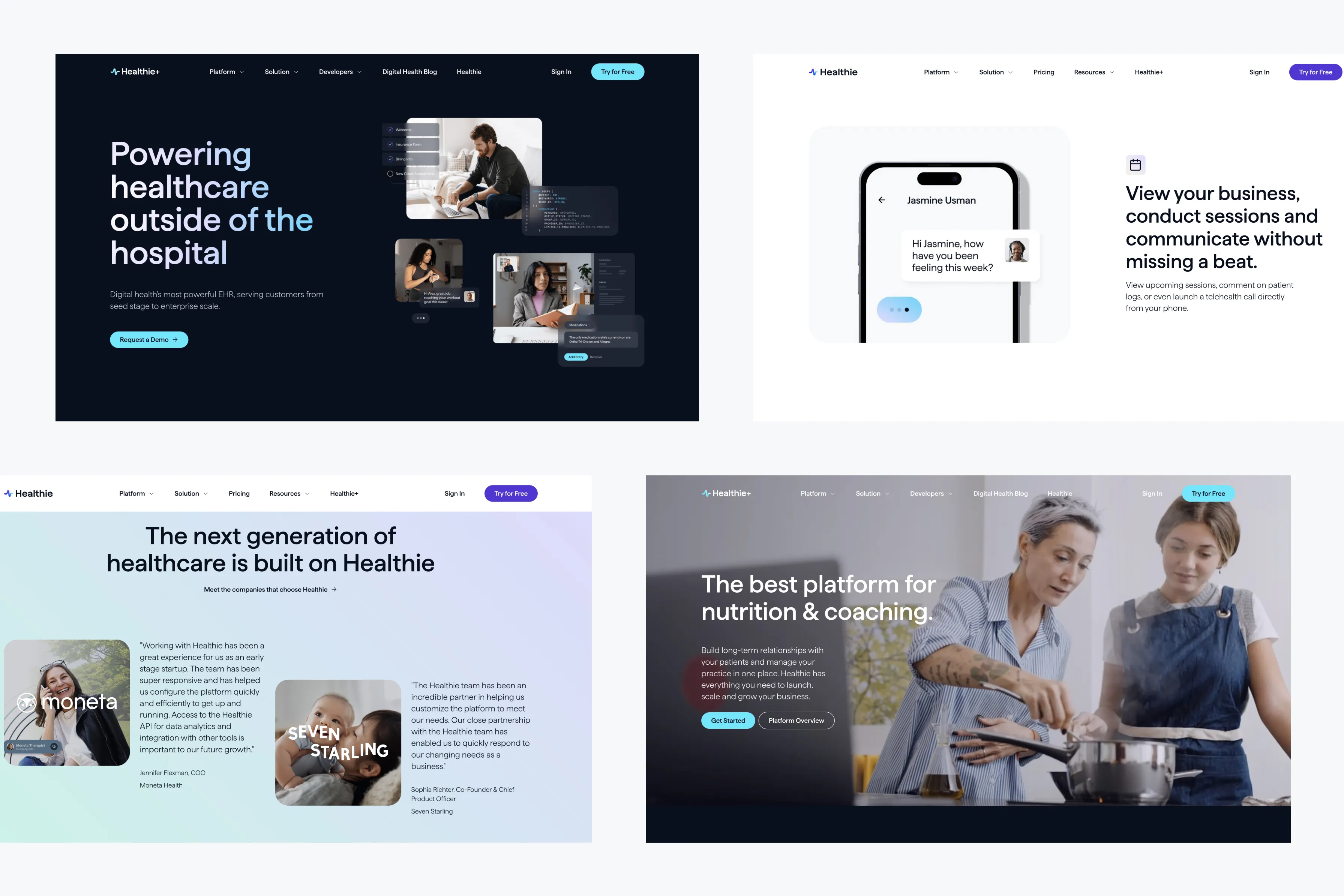The Future of Web Design: Predictions for 2025 and Beyond

Introduction: Web Design in the Next Decade
Web design is constantly evolving, and as we approach 2025, it’s clear that the future holds exciting possibilities for designers and developers. From advances in AI-driven design tools to the growing importance of accessibility and immersive experiences, the future of web design is all about creating more personalized, interactive, and inclusive websites.
In this blog, we’ll explore key trends that are likely to shape the future of web design in 2025 and beyond.
1. AI-Driven Design: The Rise of Automation
As artificial intelligence (AI) continues to advance, it’s becoming an integral part of the design process. AI-driven tools are already being used to automate tasks like image optimization, content generation, and even layout design. In the future, we can expect AI to play an even bigger role in web design, helping designers create personalized experiences at scale.
AI-powered design tools like Adobe Sensei and The Grid are already paving the way for automation in design. These tools can analyze user data and adjust website layouts in real time based on user behavior. This level of automation will allow designers to focus more on creativity while leaving repetitive tasks to AI.
2. Immersive 3D Experiences
As web technologies continue to evolve, 3D design is becoming more accessible and easier to implement on websites. The use of 3D graphics, interactive elements, and immersive environments is expected to grow, creating a more engaging and visually stunning web experience.
With advancements in WebGL and CSS3, creating lightweight, interactive 3D environments is no longer a pipe dream. Designers will be able to incorporate 3D elements into their websites to tell more compelling stories and provide users with unique interactive experiences.
3. Voice User Interfaces (VUI) and Hands-Free Interaction
Voice technology has seen rapid adoption in recent years, and its influence on web design is only set to grow. With devices like smart speakers and voice-activated assistants becoming common, designers will need to consider how voice user interfaces (VUIs) fit into the overall user experience.
In 2025, more websites will integrate voice functionality, allowing users to interact with sites hands-free. This trend will particularly benefit accessibility, as it provides an alternative way for users to navigate content, make selections, and complete actions without relying on traditional input methods.
4. The Continued Growth of Mobile-First Design
While mobile-first design is not new, it will continue to be a major focus in the coming years. As mobile usage continues to rise, designers must prioritize creating responsive, fast, and easy-to-navigate mobile experiences. This trend is expected to grow, with more companies adopting mobile-first approaches as their standard design practice.
Mobile-first design goes beyond just shrinking a desktop site to fit smaller screens. It involves rethinking the entire user experience, optimizing site performance, simplifying navigation, and ensuring accessibility for users on all devices. Web design in 2025 will see even greater attention to mobile-first strategies, ensuring that websites provide a seamless experience across all screen sizes. Considering haptics as a function in web design can be an innovative layer of user interaction (this is mainly used in mobile apps).
5. Increased Focus on Web Accessibility
Accessibility will continue to be a driving force in the future of web design. As global regulations tighten and more companies adopt inclusive design practices, websites will need to comply with accessibility standards to remain competitive and user-friendly. Designers will prioritize creating websites that cater to all users, including those with disabilities.
Accessible design will include everything from keyboard navigation to screen reader compatibility, alt text for images, and ensuring that websites are easy to navigate for users with motor impairments. Web accessibility is not just a trend but a necessity, and it will play a crucial role in shaping the future of web design.
6. Sustainability and Eco-Friendly Web Design
Sustainability is becoming a concern across industries, and web design is no exception. As companies focus more on reducing their carbon footprint, eco-friendly web design will gain momentum. This includes optimizing website performance to reduce energy consumption, minimizing data usage, and designing with efficiency in mind.
For example, optimizing images and using efficient coding practices can reduce a website’s energy consumption and overall carbon footprint. Sustainable web design will not only appeal to eco-conscious users but also improve site performance and speed, benefiting all visitors.
Image Alt Tag: Eco-friendly web design concept with energy-efficient coding practices and optimized performance
Conclusion: The Future of Web Design is Here
The future of web design will be defined by personalization, automation, accessibility, and sustainability. Designers and developers will need to embrace new technologies like AI and 3D design, while keeping user experience and accessibility at the forefront of their strategies.
As we move toward 2025 and beyond, web design will continue to evolve, with innovations that make the web more inclusive, interactive, and efficient. By staying ahead of these trends, designers can create websites that not only look stunning but also deliver exceptional performance and accessibility for all users.




















